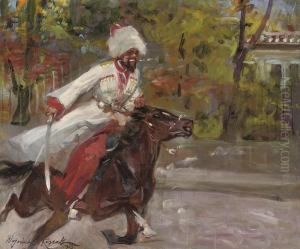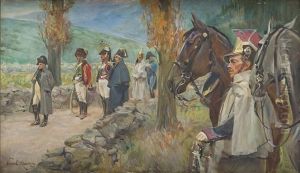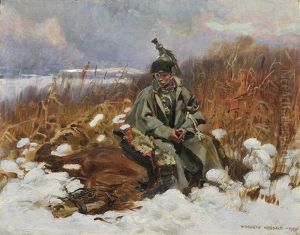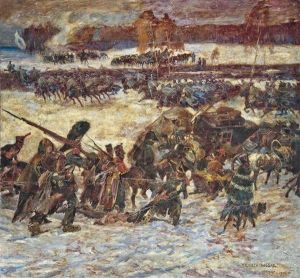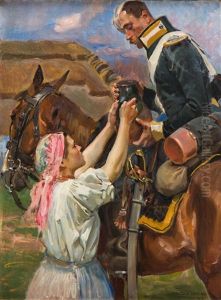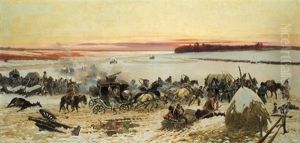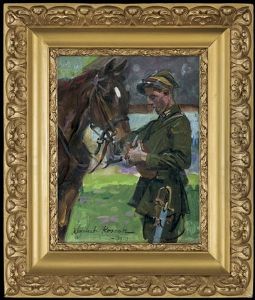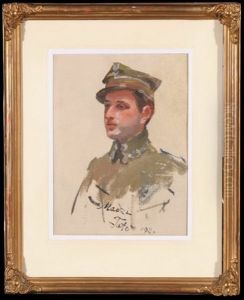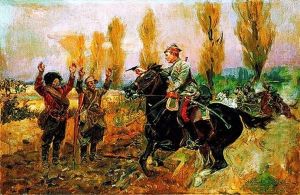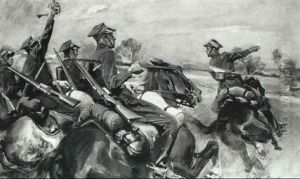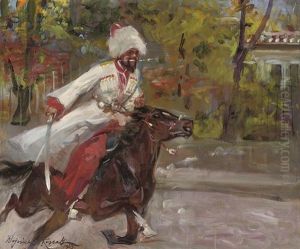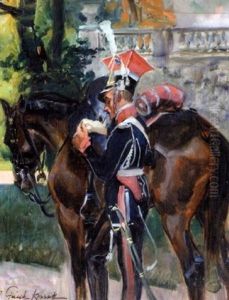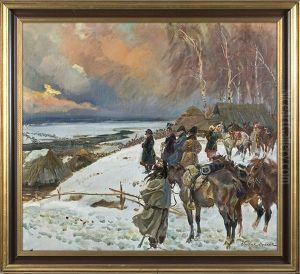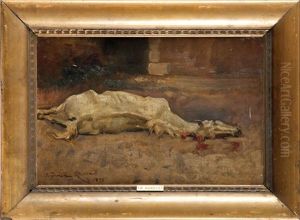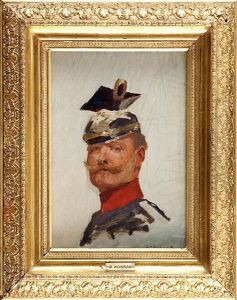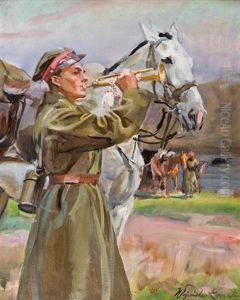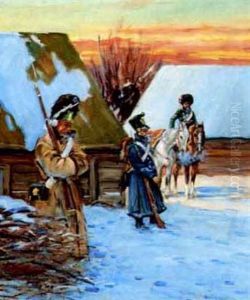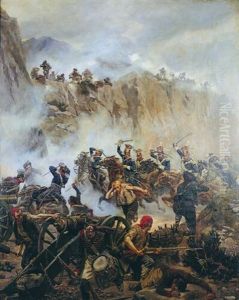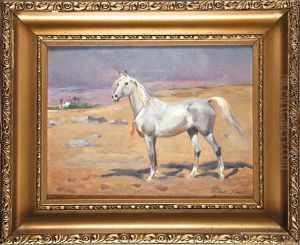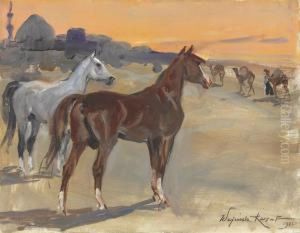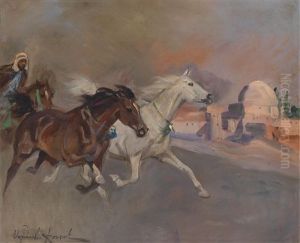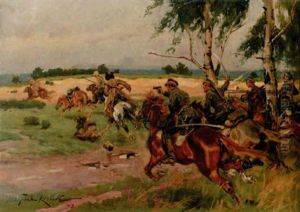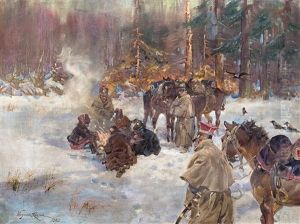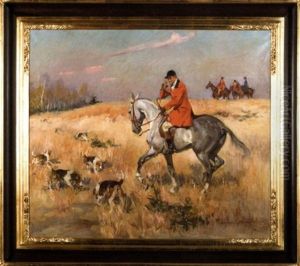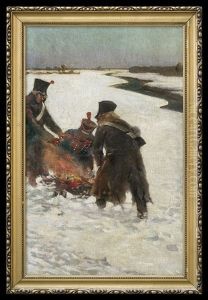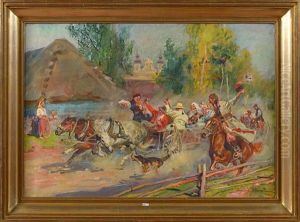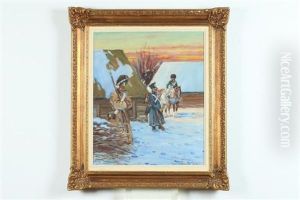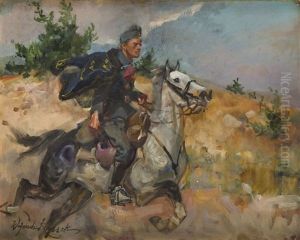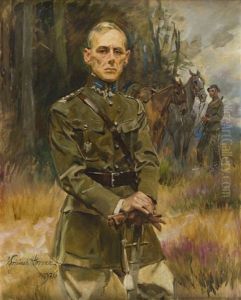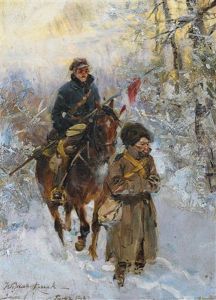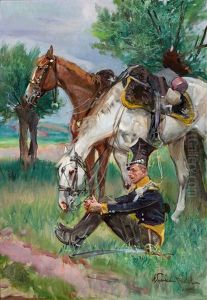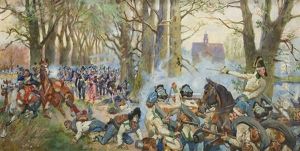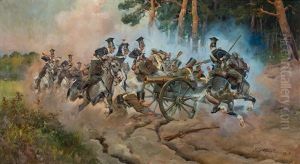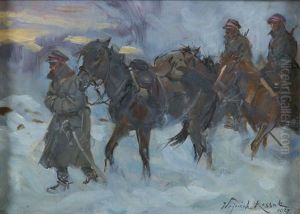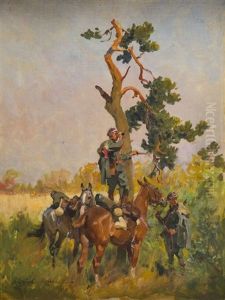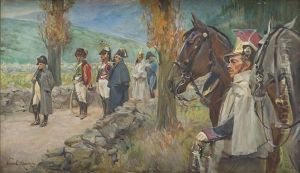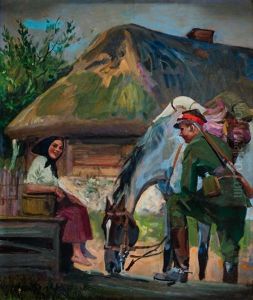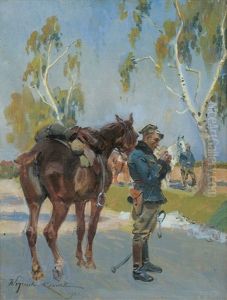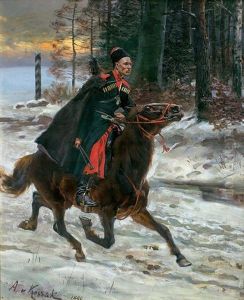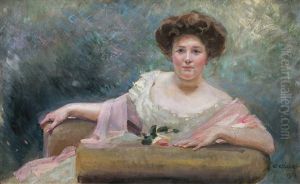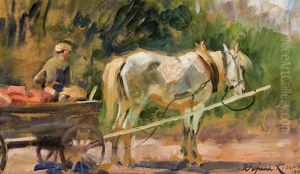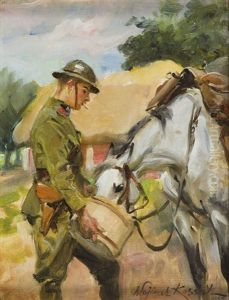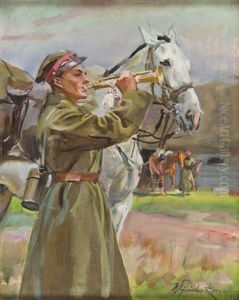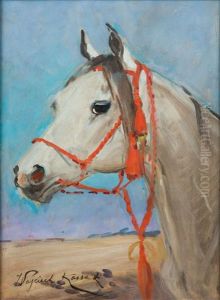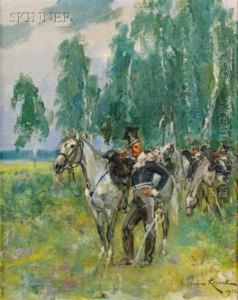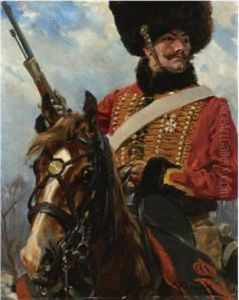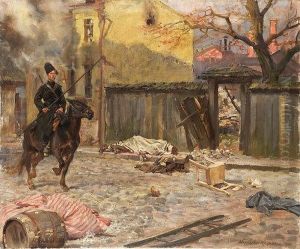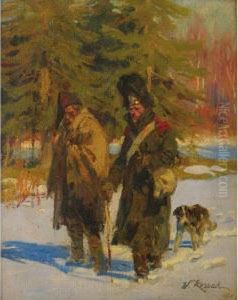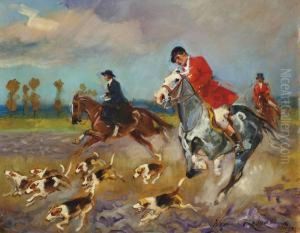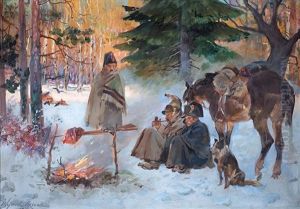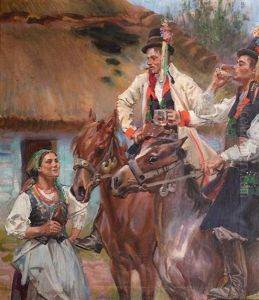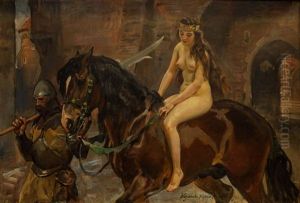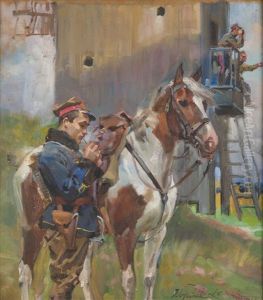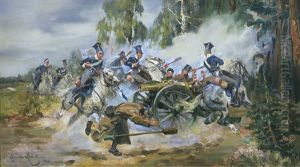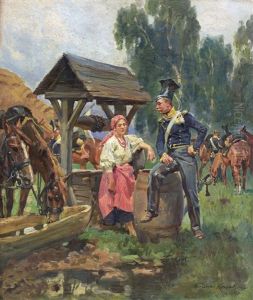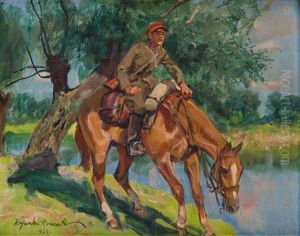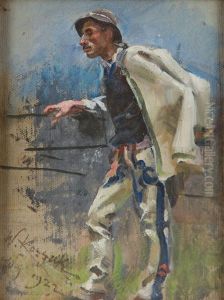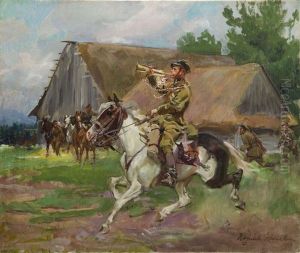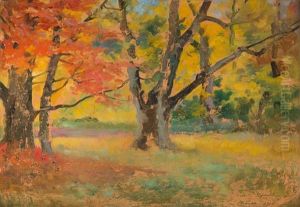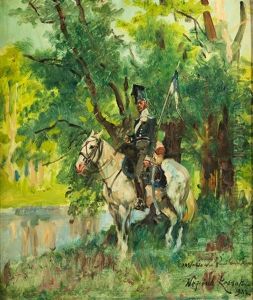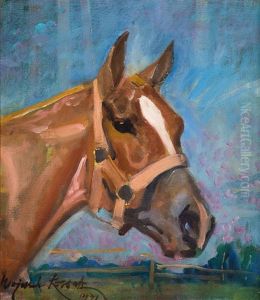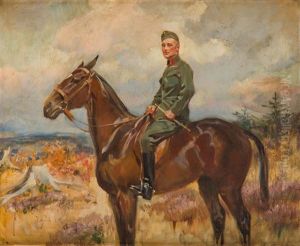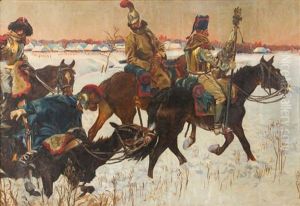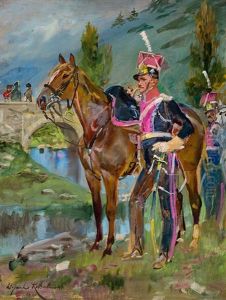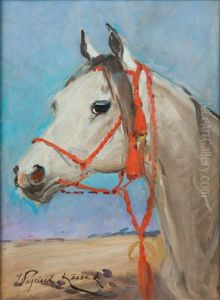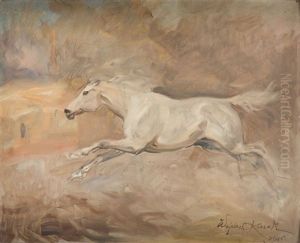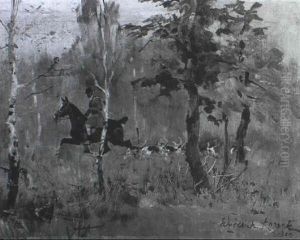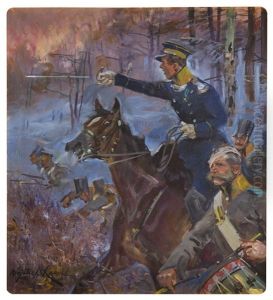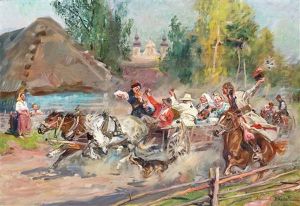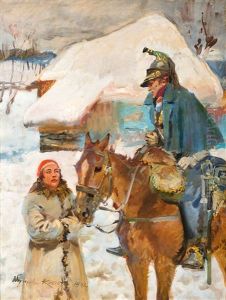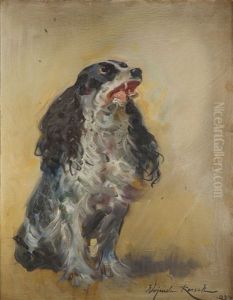Woiciech Ritter Von Kossak Paintings
Wojciech Kossak was a prominent Polish painter known for his depictions of historical scenes, battles, and horses. He was born on December 31, 1856, in Paris to Julia and Juliusz Kossak, both painters themselves, which provided Wojciech with an artistic environment from an early age. His father, Juliusz, was particularly well-known for his paintings of horses and military subjects, which had a significant influence on Wojciech's future work.
Kossak studied at the School of Fine Arts in Kraków and later at the Academy of Fine Arts in Munich. His education under the guidance of historical painter Jan Matejko also had a profound impact on his style and choice of subjects. Kossak's work is characterized by its detailed historical accuracy, vividness, and dynamic composition. He became one of the most famous Polish painters of historical scenes, contributing significantly to the visual culture of Polish history.
Throughout his career, Kossak participated in numerous exhibitions and received various accolades for his work. He painted many battle scenes, with one of his most famous works being the large panoramic painting 'The Battle of Racławice' (1894), which he co-created with Jan Styka. This monumental painting depicts the victorious battle of the Polish Kościuszko Uprising against the Russian Empire in 1794 and is an iconic piece of Polish national heritage.
Kossak was also a master at portraying horses, just like his father. His equestrian scenes are celebrated for their realism and dynamic representation of the animals in action. Aside from historical paintings, he also created numerous portraits, genre scenes, and illustrations for books.
Wojciech Kossak was an active member of the art community and played a role in various art organizations. His legacy includes not only his vast body of work but also his continuity of the Kossak family artistic tradition, as his descendants also became accomplished artists.
He lived through both World Wars, witnessing the drastic changes and turmoil in Europe, which also influenced his later works. Wojciech Kossak passed away on July 29, 1942, in Kraków, during the difficult years of World War II. His artworks remain highly regarded in Poland and are exhibited in many museums, galleries, and private collections. Kossak's commitment to documenting Polish history through his art has made him a beloved figure in Polish culture.
